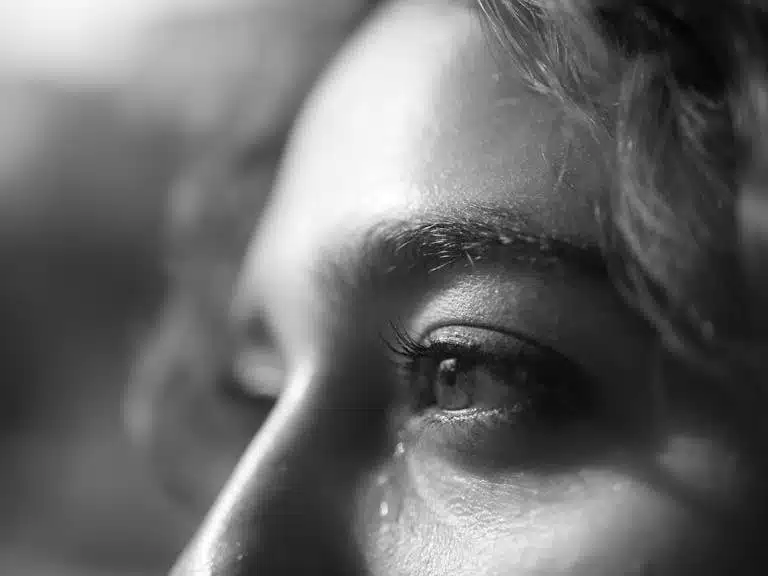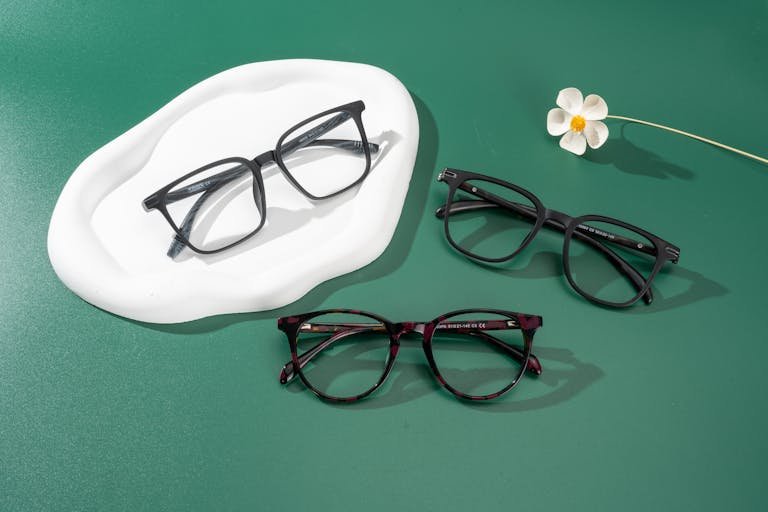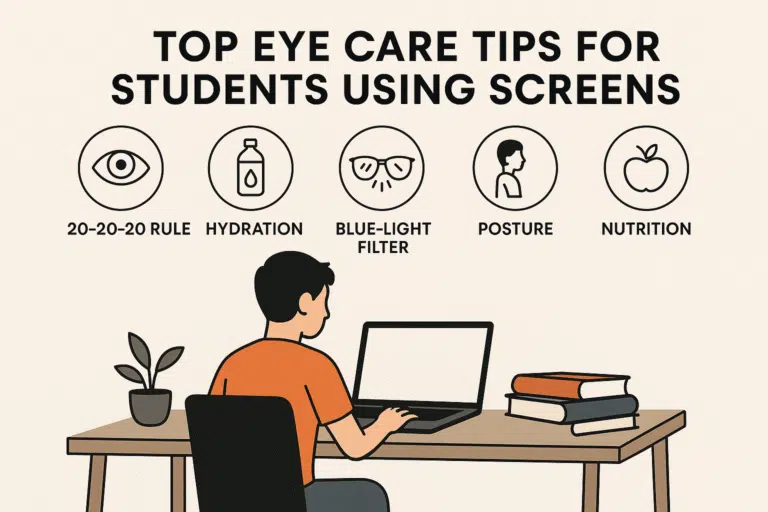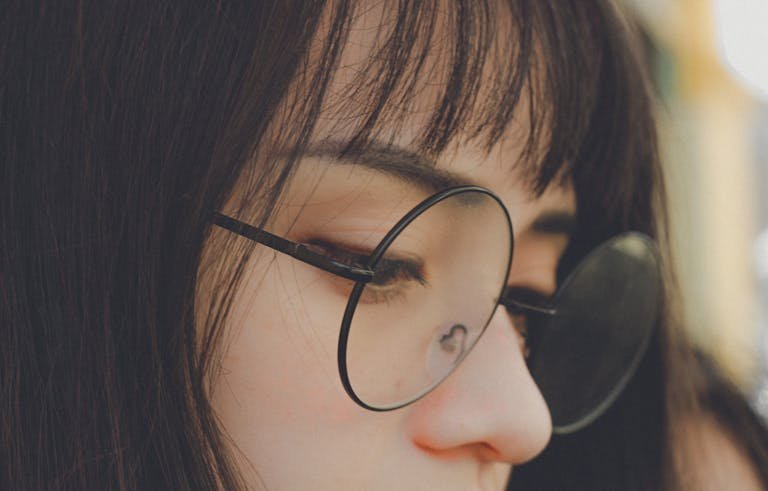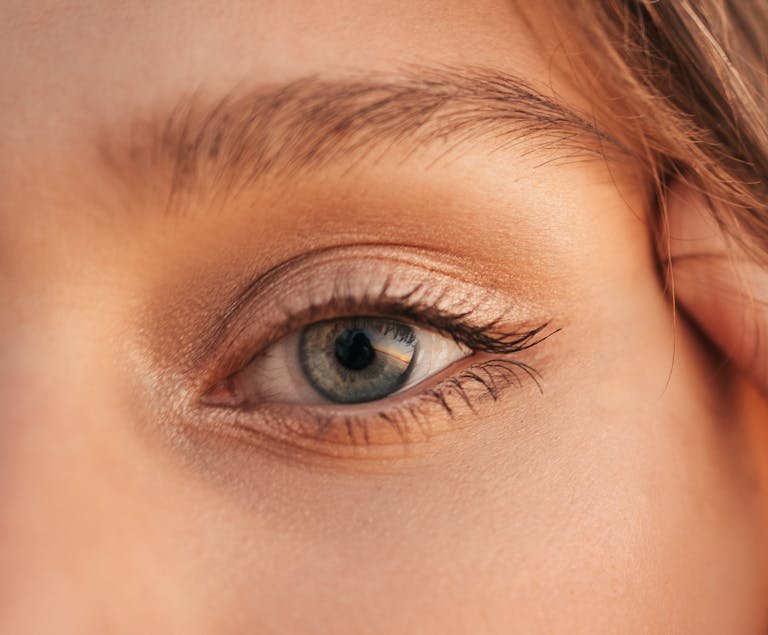5 Easy Ways to Add Padding to Glasses Ends in 2025
Have you had the experience of wearing your glasses and having them pinch your ears a few hours into wearing them, and having them fall on your face every step of every five minutes? It is just one of those small things that can destroy your comfort throughout the day.
I am Laura, and I have suffered the same fate as you. I have had the sliding, the aching, and the shifting around, and I have tried every gimmick in the business to rectify that. Over time, I have discovered my tricks on how to ensure glasses are secured and comfortable throughout the day, and now I am here to share that information with you.
In this blog, I will show you what padding is best to put on glasses ends, how to use it to maximum benefit, and a simple, step-by-step instruction on how to do it yourself.
Types of Padding for Glasses Ends
1. Silicone Temple Tip Covers
Silicone temple tip covers, these are soft, malleable sleeves of hypoallergenic silicone that go over the temple tips.
Benefits
- Invisible Comfort: Clear or color-matched, which can match your frames.
- Hypoallergenic: Has a mild action on sensitive skin and least irritation, redness.
- Anti-Slip Grip: Prevent your glasses from sliding off your nose when doing grocery shopping.
- Long-lasting: Lasts long and is water-resistant, waterproof & UV fade-resistant.
- Simple to install: Stretches on and is easily removed or changed in seconds.
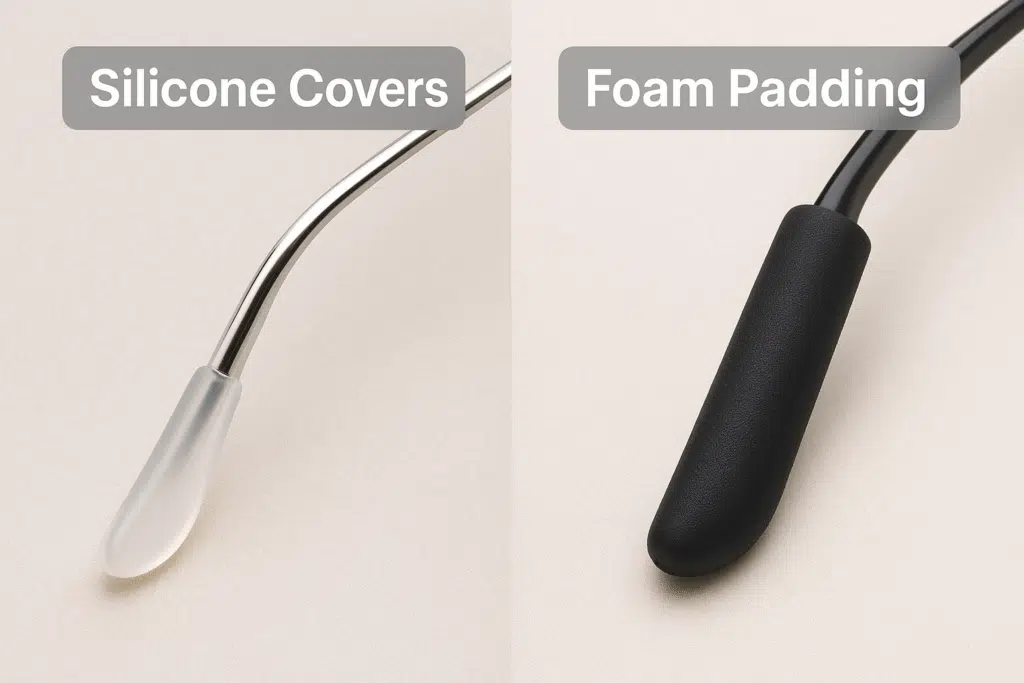
2. Foam Tube padding
Padding on foam tubes consists of soft, lightweight foam with a slot cut down the middle; this is folded around the tips of temples to provide the greatest possible padding.
Benefits
- Maximum Cushioning: Thick foam cushion minimises pressure points all day.
- Feel: It does not make your glasses feel heavy, but it does provide comfort.
- Simple to use: Press on the tab as you open the slit, wrap around the tip of the temple, and press closed.
- Affordable Comfort Upgrade: The price is cheaper than frame replacement.
- Adjustability: You can trim it to whatever length will fit perfectly.
3. Fabric or Neoprene Sleeves
Fabric or neoprene sleeves are soft, washable covers that pull over the temple ends to increase comfort and give a bit of flair. Neoprene becomes a plus to use as it is more water-resistant.
Benefits
- Breathable Fabric: Blends with your skin, cool and comfortable.
- Stylish Varieties: Offers in different hues and styles to custom-made your frames.
- Reusable and Washable: Simple to wash, or clean to maintain freshness and enduring structure, hygiene.
- Additional Grip: Glasses do not slip during sports and other outdoor games and activities.
- Water-Resistant (Neoprene): For those who live and play active lifestyles or live in humid environments.
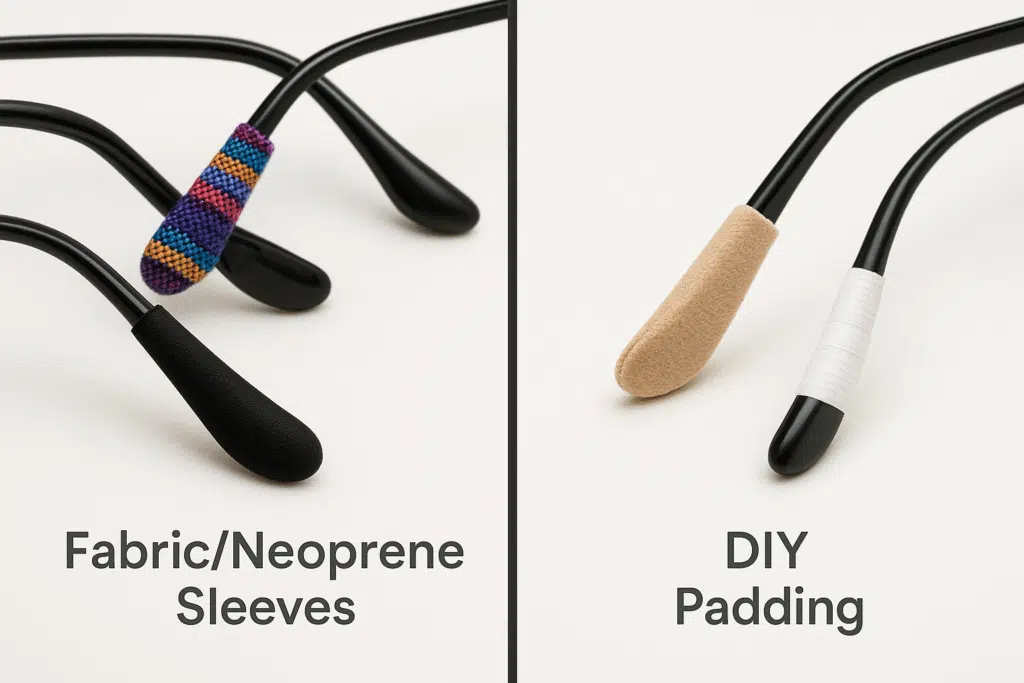
Read Also: What Is a Photochromic Lens? Benefits, Types & How It Works
4. DIY Padding
DIY cushioning is the application of adhesive moleskine (with a moleskine or soft medical tape) wrapped around the tips of the temples to offer fast, cheap comfort.
Benefits
- Low-Cost Solution: Uses cheap and easy-to-find materials.
- Completely Versatile: Trim and mold the padding to your specifications.
- Instant Relief: Express solution to pain, not having to wait until the accessories come.
- Travel-Friendly: Portable, convenient to carry a long way, and used anywhere.
- Skin Friendly: Guided by medical-grade moleskine and sports tape are helpful in reducing irritation.
How to Add Padding to Glasses Ends
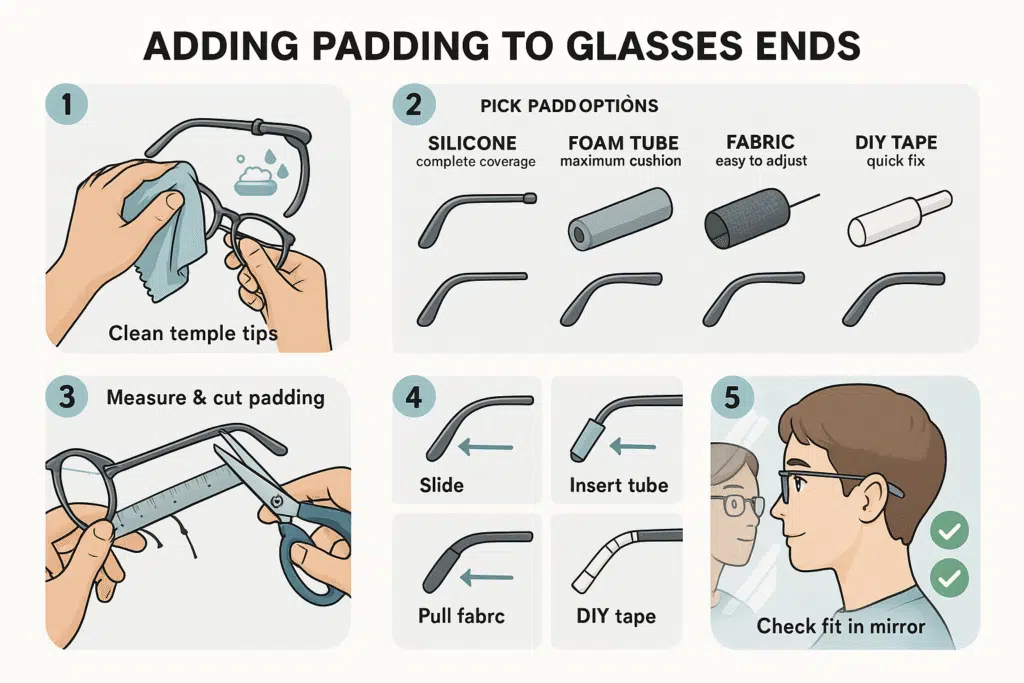
1. Clean the Temple Tips
Padding sticks and fits better when the surface is clean.
- Clean with a microfiber cloth.
- Clean using soapy and warm water.
- Dry completely.
2. Pick Your Padding
Decide based on your needs:
- Discreet comfort → Silicone.
- Maximum cushion → Foam.
- Style + comfort → Fabric.
- Quick fix → DIY.
3. Measure and Cut
Get a perfect fit:
- Measure the length of your temple tips.
- Cut padding to size (unless it’s pre-sized).
4. Install the Padding
For Silicone Covers
- Stretch it out a little bit and slide it onto the temple tip.
- Adjust until it is fitted snugly without bulk.
For Foam Tubes
- Open the slit in the foam and wrap it around the temple tip.
- Press firmly to close.
For Fabric Sleeves
- Slide the sleeve over the tip; some may need to be slightly dampened to stretch.
For DIY Tape
- Wrap the material smoothly around the tip.
- Avoid wrinkles or folds to prevent irritation.
5. Adjust for Comfort
Put your glasses on and check:
- Is the pressure even?
- Does it stay in place?
- Is it irritation-free?
Faqs
1. How do I fix the ends of my glasses?
Add silicone covers, foam tubes, or replace temple tips for instant comfort and a better fit.
2. Can I add nose pads without tools?
Yes, use peel-and-stick nose pads for a fast, tool-free upgrade.
3. How do I put padding on glasses?
Clean the ends, measure, cut, and slide or wrap the padding securely in place.
4. How do I adjust the glasses’ end pieces?
Bend metal tips or warm plastic ends with warm water before bending.
Read Also: What Are Deep-Set Eyes? How to Tell & Enhance Them
Final Thoughts
Adding padding to glasses ends is one of the easiest, cheapest ways to transform your daily eyewear comfort. I’ve personally gone from sore ears after two hours to wearing my glasses from morning till night without even thinking about them.
Trouble in discomfort, I assure you, that a little trouble is worth it. Simply choose the appropriate padding, use the instructions, and you will have a feeling of holding a glasses on your head.


